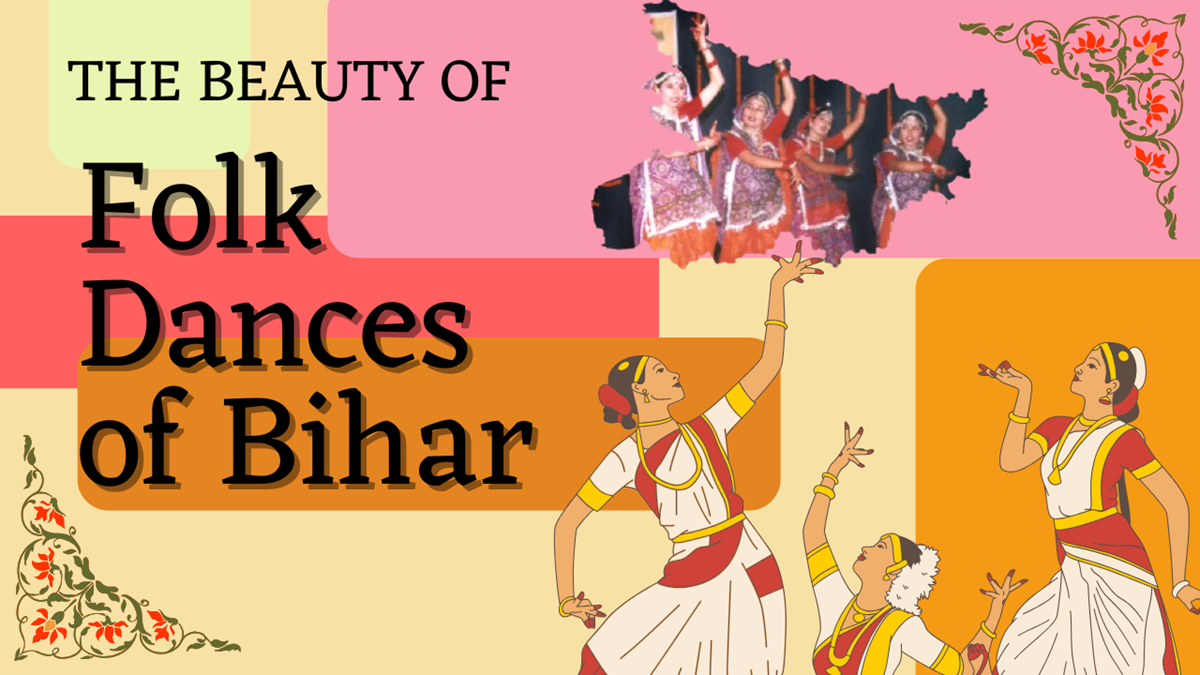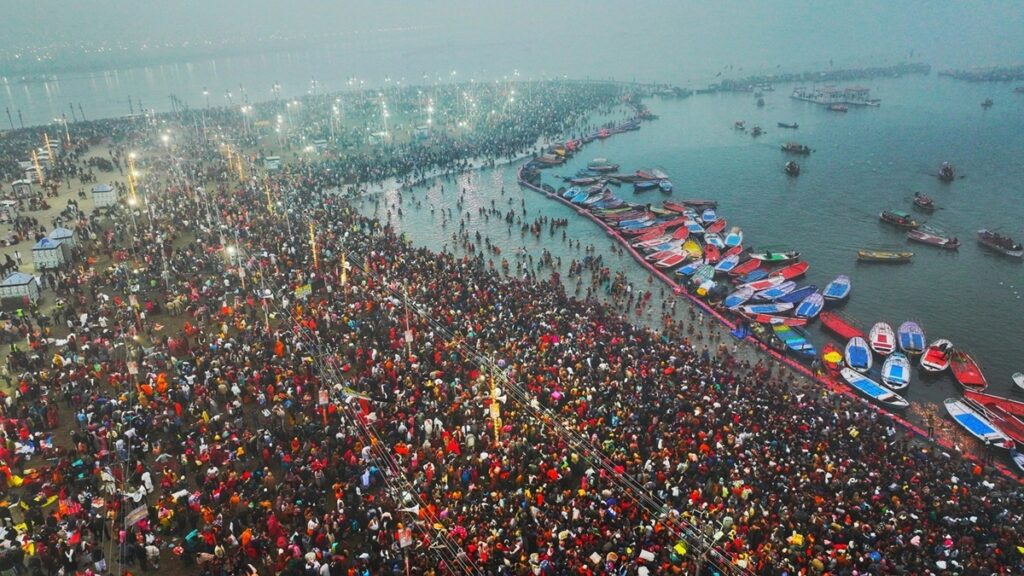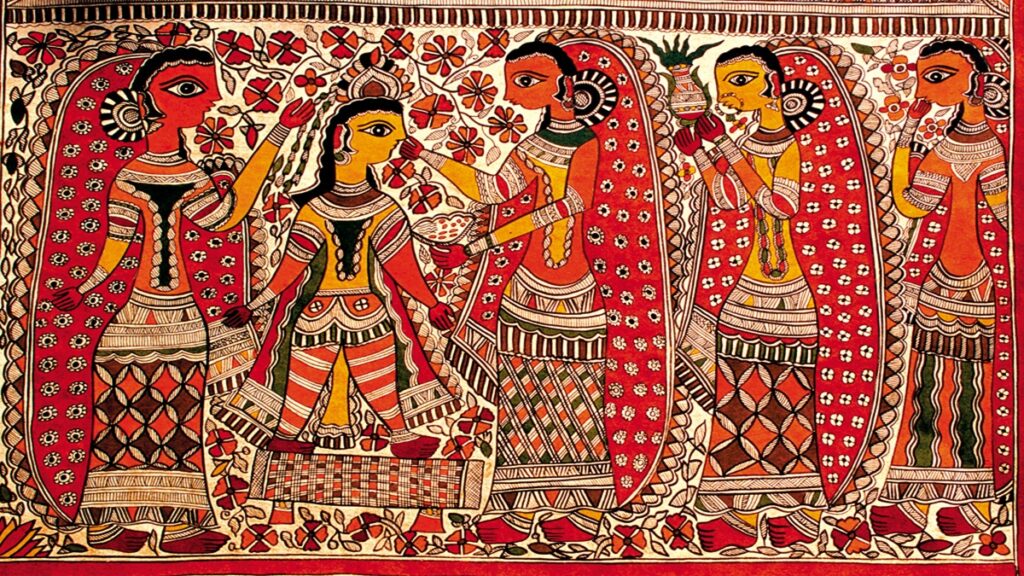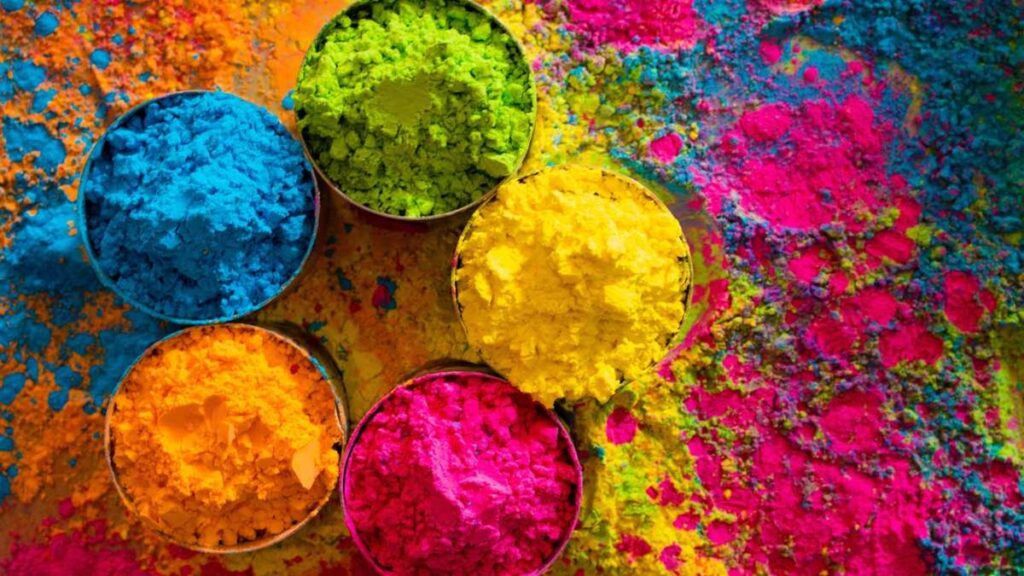Bihar’s folk dances are colorful representations of its people’s history, religion, and day-to-day lives. Much more than just a form of entertainment, these traditional dance forms of Bihar narrate tales of migration, harvest, worship, and celebration. From the dramatic plays of Bidesia to the social gatherings of Jhumar, every dance in the Bihar folk dance list embodies a distinct combination of music, attire, and movement that has been handed down through generations. Through this article, we explore nine well-known folk dances of Bihar—each of which is based in the agrarian calendar, religious celebrations, and social traditions—to discover the cultural heartbeat of this northeastern Indian state.
The Cultural Canvas of Bihar
Bihar’s cultural history along the Ganges incorporates folk traditions built upon Hindu epics, tribal ceremonies, and centuries-old rural traditions and life. Folk dances mark different moments throughout the calendar year: monsoons, sowing crops, harvesting crops, births, and religious celebrations such as Durga Puja and Holi. Folk dance of Bihar is performed in village squares, temple courtyards, and new stage formats with the intention to transfer and maintain local dialects (Bhojpuri, Maithili); community and family connections, and ancestral memory to maintain the richness of Bihar’s cultural history as changing a living and ongoing tradition.

Iconic Folk Dances of Bihar
a. Bidesia : Developed as a Bhojpuri play by Bhikhari Thakur, Bidesia was transformed into a dance-drama dealing with the subject of migration, separation of families, and social satire. The troupes employ male actors playing female roles, relying on emotive mime, song, and minimalist sets to reflect the homesickness of those who are left behind when the villagers travel to cities for employment.
b. Jat-Jatin : From the Mithila area, Jat-Jatin is a duet sung by a man and woman during the monsoon. The dance enacts lovers’ future separation as he gets ready to go out for work, while she moves around him with her dupatta fluttering like tears. Played on dholak and manjira, its circular footwork and plaintive lyrics capture both sorrow and resilience.
c. Jhijhiya : A devotional folk dance of North Bihar played on Durga Puja and Dussehra, Jhijhiya folk dance of Bihar includes women balancing perforated clay pots and lamps on their heads. With their singing call-and-response songs calling out the Goddess Durga and monsoon rains, their elegant balancing repels evil forces and brings fertility to the fields.
d. Chhau (Saraikela Style) : Saraikela Chhau, one of three UNESCO-recognized Chhau styles where one can find a mix of martial arts & acrobatics, through the use of elaborately decorated masks and vigorous movement, communicates mythological stories. During the performance, the performers will represent scenes from the Ramayana or Mahabharata, leaping and striking poses from the movements of drums and shehnai (a wind instrument). While it is formally recognized by UNESCO for its cultural significance, this semi-classical dance tradition joins Bihar’s borderlands with Jharkhand.
e. Sohar-Khilouna : Celebrating the arrival of a newborn in a household Maithili community, Sohar-Khilouna is performed by circular dancing around the hearth and singing. Women dance and clap along, congratulating and blessing the family in this personal folk tradition with lullabies, announcing wishes of wealth and good health and blessings for the mother and child.
f. Fagua : Fagua, also referred to as Phagua, is a colorful and fun Holi-season dance. The villagers will wear colorful costumes, joyfully beat the dholak drums, dance in playful circular patterns, and toss gulal onto each other. Fagua celebrates the victory of good over evil and life being renewed through the spring festival.
g. Kajari : Kajari, also known as Kajri, is a semi-classical folk song and dance form from the Bhojpuri area that features a strong performance tradition in the monsoon months, or “Sawan”. Based on the lovers’ longing and the “kohl-black” monsoon clouds above, the performers develop slow, swaying movements to mirror the music. The dance is often performed with the help of accompanying instruments including harmonium and tabla.
h. Karma Naach : The Karma dance, originating in tribal communities, is performed by village folk at the Karam festival in autumn. After villagers plant a branch of the sacred Karma tree, they create a linked-arm circle and dance around the tree with the percussion of drums (the timki, the chhalla—all kinds of drums) in spirit and steps. The villagers make offerings of rice and milk to consecrate the Karma tree before and after the dance and call upon Karam-Devta to bless them with abundance for another year.
i. Jhumar : Jhumar dance of Bihar, also known as Jhumair, is one of the favorite dances of Bihar, performed primarily in Magadh and on the boundaries of Chotanagpur. Jhumar is a harvest-season dance performed, after the crops are safe, by male and female dancers generally holding hands and swaying while hopping and clapping in time to the music made by the mandar, dhol, and nagara. In between are sung couplets that praise communal solidarity and agricultural abundance.
Costumes and Musical Instruments
Costumes in the folk dances of Bihar are colorful reflections of traditional textiles and artisanship. Printed saris with contrasting borders are worn by women, while men wear white-colored dhotis and kurtas, both decorated with tribal beads and ornaments made of silver. Musical elements include the dholak, nagara, manjira, bansuri, timki, mandar, and harmonium—each instrument made of cane, metal, or animal skin to deliver the characteristic rhythms and melodies characteristic of the dance of Bihar.
Contemporary Revival and Global Recognition
In the most recent years, the state cultural bodies, NGOs, and university troupes have rejuvenated the famous folk dances of Bihar heritage through formal training programs and festivals like Bihar Diwas. Digital platforms are now showing performances across the globe—Saraikela Chhau in Paris, Kajari in Frankfurt—while skills and choreographers have integrated modern and multimedia possibilities and captured audiences’ imagination, which helped reinvigorate and maintain the cultural integrity of this Bihar folk dance list remains grounded in tradition yet adaptable and scalable to global stages.
Conclusion
Bihar’s folk dance – ranging from the emotive drama of Bidesia to the communal pleasure of Jhumar – hold centuries of rural tradition, ritual, and perseverance. Attending a local performance, helping a cultural troupe, and sharing Bihari folklore online are all ways that we can protect and celebrate the folk heritage of Bihar, and in turn keep these dances alive for generations to inspire and unite.




